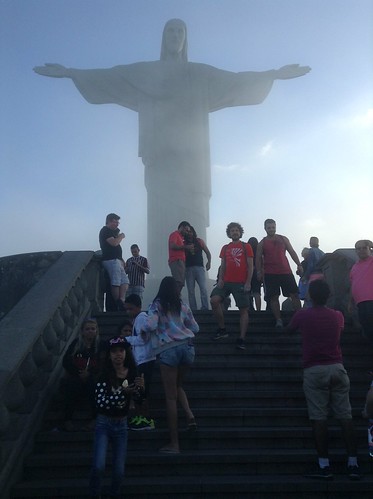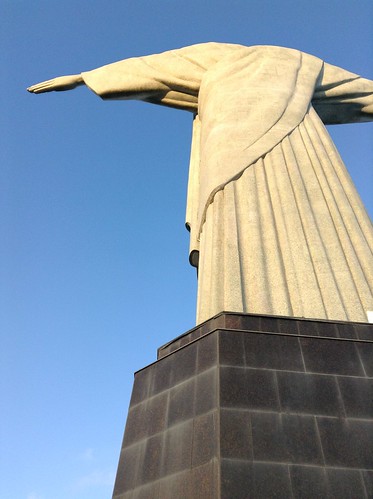
“Narrow is the way which leadeth unto life, and few there be that find it.”
So said Jesus, according to the Book of Matthew, Chapter 7. Was Jesus a rock climber? He could have been describing the climb in Rio de Janeiro that ascends Mt. Corcovado, atop which stands the famous Art Deco statue Cristo Redentor (“Christ the Redeemer”).
I wanted to do this route back in December 2013 when I lived in Rio for three months and did a lot of rock climbing. I’ve hardly climbed since then.
But this past week I returned to Rio and connected with my old rock climbing partner Aloisio. I’ve been somewhat frantically training for this trip, climbing regularly at a gym in Belo Horizonte for the past month to get into shape.
Aloisio first brought me to a climbing area called Platô da Lagoa, directly across from Corcovado. As we climbed, he pointed to Corcovado and described a route called K2, which begins at the upper right ridge of the mountain. It beckoned.
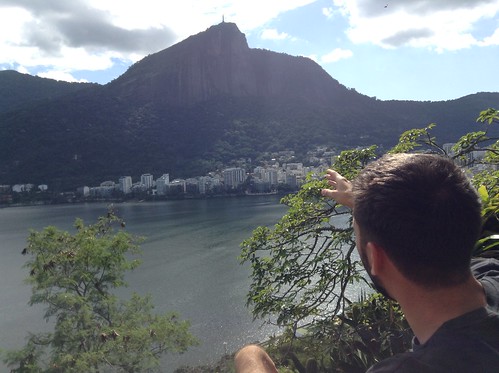
The following afternoon we were on Corcovado’s face. The trail to the route was as Jesus said it would be: an unmarked narrow path off the wide road that most tourists take to the summit.
K2 is not very hard (it is rated 5.8+). But it is knee-rattling because it is so high and some pitches are very exposed. For the lead climber, falling anywhere almost surely means bruises and brakes.
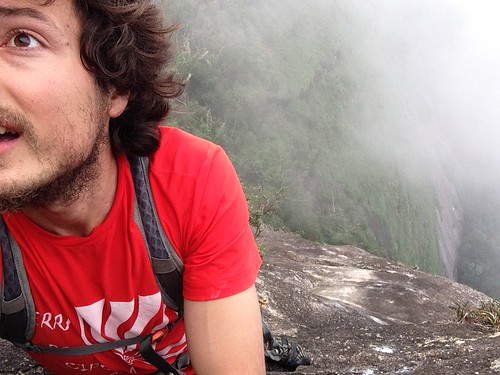
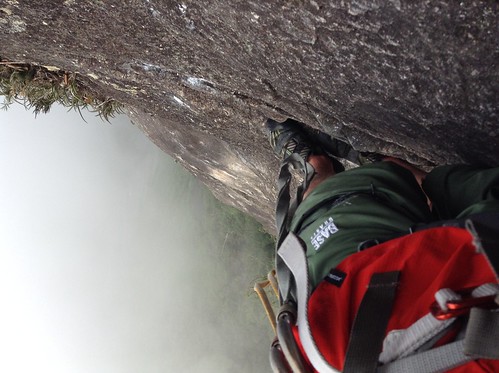
Aloisio tied into the rope, I put him on belay, and soon he was out of sight, enveloped in the thick cloud that had settled around the granite peak. I belayed him from my small perch, and then his voice yelled for me to start climbing. I could hear cars rumbling about 2,000 feet below. I chalked up my hands and began the dihedral first pitch.
It was terrifying, in a wonderful way.

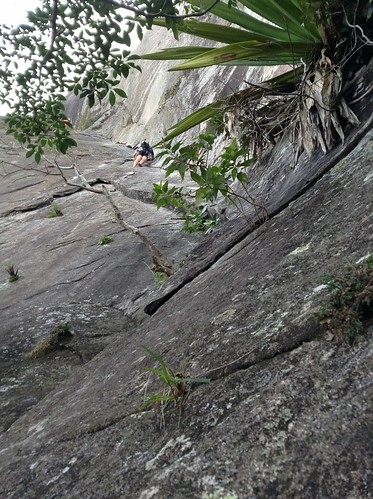
There were five pitches in total. At the top of each pitch I met Aloisio, and then he’d start lead-climbing while I belayed him from below. He’s climbed this route a half-dozen times, but he said it’s always a little intimidating because of the height, the exposure, the sounds, the clouds.
Rio de Janeiro is a climber’s paradise. Everywhere, sheer cliffs are rising from the sea and towering over neighborhoods, with thousands of rock climbing routes scattered around the city. It’s a unique style of climbing: the granite rock is sharp and it’s nubby, kind of like an amplified surface of a extra-coarse sandpaper. Climbing in Rio isn’t a matter of strength, but of the ability to balance all your weight on one toe atop a single marble-sized nub protruding from the rock wall.
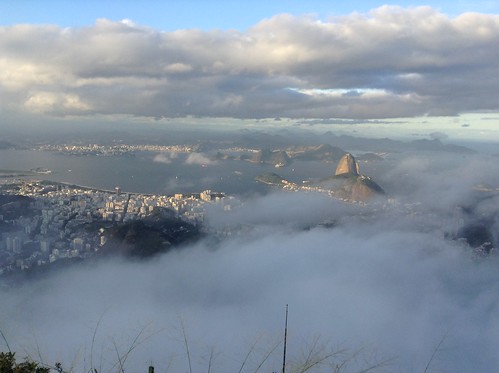
Now imagine balancing atop that marble 2,000 feet high, with the only thing preventing your fall being a rope that you hope is strong and tied securely at both ends. It brings on a feeling of helplessness. I was totally reliant on Aloisio. I was happy to let him lead the entire route!
We emerged from a thicket just below the summit lookout. We climbed over the guardrail (which was posted with a sign that said “no climbing”) and up onto the veranda, to some staring and gawking from the dozens of well-dressed tourists who had paid $40 apiece for entry and transport to the summit.
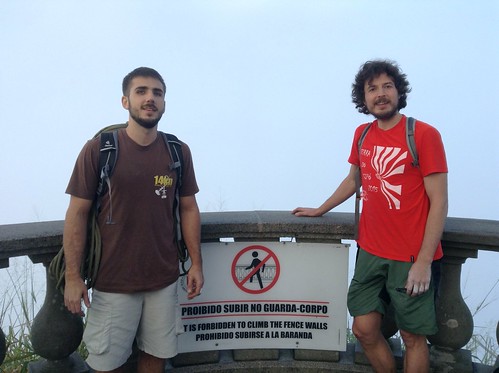
We were sweaty, dirty. My knee was bleeding from scraping against the sharp granite. Ahead of us was Cristo Redentor, arms spread, appearing in and out of the cloud. I jumped up and gave Jesus a high-five.
